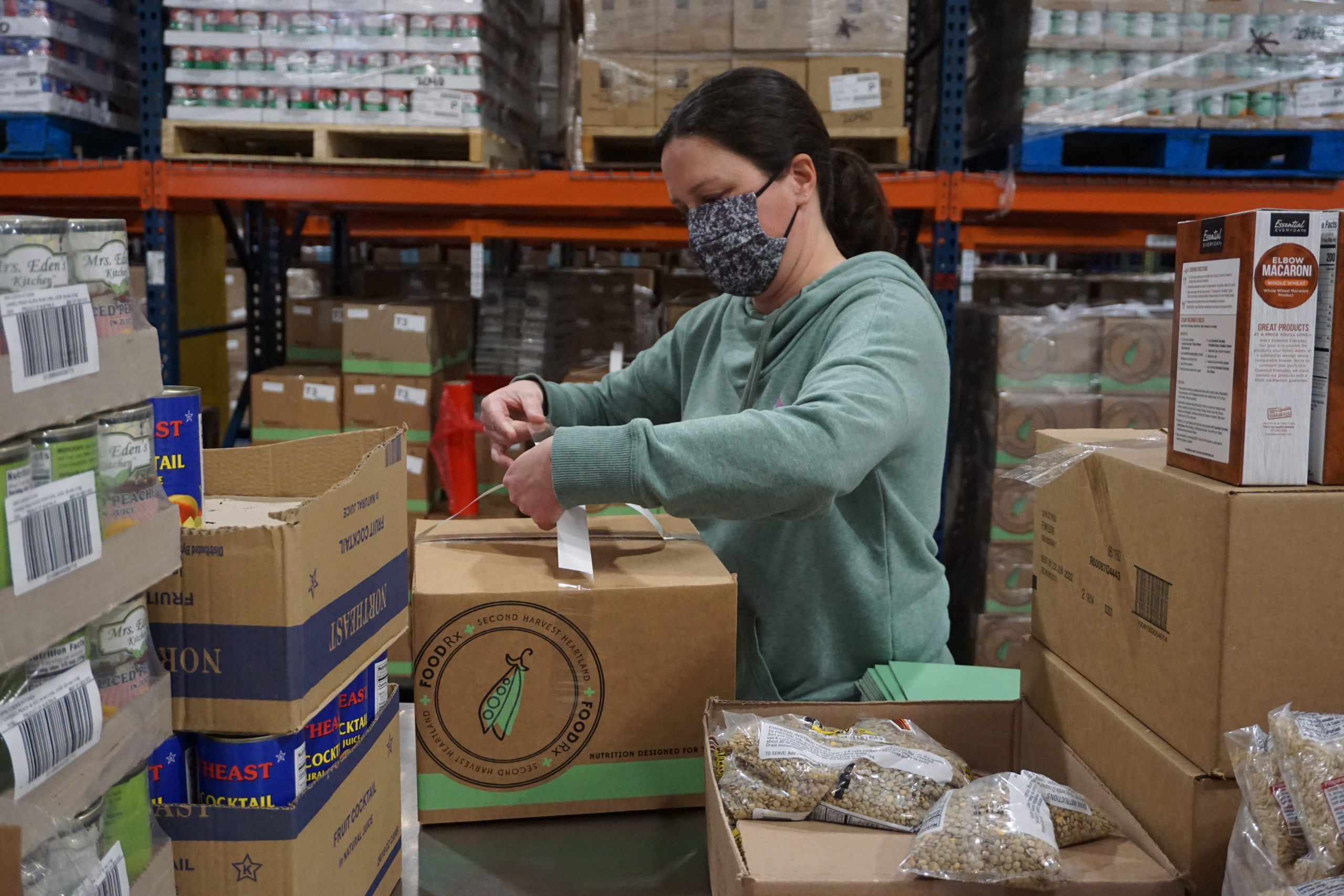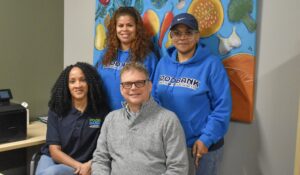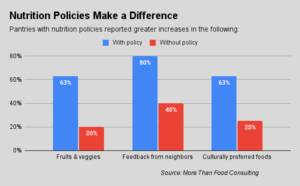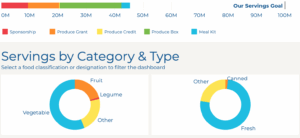The healthcare system may be vast and complicated, but finding a way to work within it can supercharge a food bank’s ability to ease food insecurity.
Second Harvest Heartland, the country’s seventh-largest food bank (by revenue) and the largest in Minnesota, has succeeded in integrating itself into the state’s healthcare system after years of developing a business model that’s favorable for all the parties involved. Within its FOODRx model, food-insecure people with chronic disease are becoming healthier, healthcare providers and plans are saving money, and Second Harvest Heartland is running a sustainable, revenue-generating operation.
Second Harvest Heartland, with $162 million of FY 2019 revenue, according to Food Bank News’ listing of the top 100 food banks, is among the more than 70% of food banks in the Feeding America network that are engaged in some sort of partnership with the healthcare system, according to a March report from Foodshare’s Institute for Hunger Research & Solutions and Feeding America. Various initiatives include partnering with clinics to host on-site food pantries and supplying food pantry clients with diabetes-appropriate food packages, all in an effort to reduce the incidence of chronic, diet-related disease via improved food security.
Second Harvest Heartland’s effort is notable for the depth of its integration with the healthcare system and its success in creating a sustainable program. Its healthcare-driven solution to food insecurity came about as the healthcare system has evolved toward so-called value-based solutions. Under value-based care, healthcare providers get incentives to provide a higher quality of care (rather than simply deliver more services).

By working with providers to give patients regular access to nutritious food, Second Harvest Heartland has been able to show improved health for at-risk patients. This has led to reduced costs for insurers, and added incentive for health plans and providers to continue doing business with the food bank.
“We knew that a value-based solution was the way to go,” said Jana Martin, FOODRx Program Manager and Registered Dietitian. “Our goal is to provide better nutrition to improve health outcomes and reduce those costs.”
At its core, the multi-faceted FOODRx program helps people manage chronic disease. Second Harvest Heartland mainly does this by providing medically tailored nutrition-prescription food boxes to people identified as having one of four specific conditions — diabetes, hypertension, congestive heart failure or ischemic heart disease — with enrollments typically lasting from six to 12 months.
In addition to the prescription food boxes, people enrolled in the program have access to all of the wrap-around services offered by Second Harvest Heartland, including assistance in filling out SNAP applications, plus access to help with housing, transportation, utilities, filing tax documents and so on. “It’s a one-stop shop type of place,” Martin said. “We place the patient in the center and understand all that they need.”
The ultimate goal is to help patients fully connect to Second Harvest Heartland and other services so they can continue to support their healthier lifestyles, even once their enrollment in FOODRx ends. Dramatic cost savings come about simply by helping people stay out of the emergency room, Martin said. “Every time that patient comes back into the ER, it is a costly expense to the hospitals,” she noted.
To help ensure patients make the transition to a healthy lifestyle, two full-time patient engagement coordinators and a team of about six volunteers check in with clients at least monthly to make sure they are overcoming barriers and thriving to their fullest potential. Martin noted that client situations can change drastically month to month, making outreach with plenty of touchpoints the best way to build trust. “We want the patient to know there is a face behind the box,” she said.
Second Harvest Heartland is working with 24 healthcare partners and three health plans so far, and each has entered into a customized, revenue-generating contract with the food bank. “They pay us for each service,” Martin said. Negotiated aspects of the contract include the contents of the nutrition prescription box, the length of the program, the number of people enrolled, whether wraparound services are included, and whether the food bank or the healthcare provider does the bulk of the patient engagement.
Two hundred patients are currently enrolled in FOODRx. The program had a 200% increase in revenue over the last year, causing it to break even, Martin said. Sixty percent of revenue generated this year will come from new partnerships developed in 2021, which will continue to drive scale, she added.
As the program grows, Second Harvest Heartland is showing a return on investment. In general, patient health is improving and the cost of care is going down “because we’re addressing the food insecurity that causes the long-term health issues,” Martin said. Detailed results of the program’s efficacy will be published at a yet-to-be-determined date.
Critical to the operation is Second Harvest Heartland’s HIPAA-compliant database, which ensures sensitive patient health information is protected. “That’s a big selling point in terms of starting partnerships,” Martin said. “Without that security in place, the health system won’t send you patient information.”
Second Harvest Heartland receives patient information in two ways. Patients identified by the Department of Health as being on Medicaid and having one of the four chronic diseases are filtered through to the healthcare partner and then to the food bank. It also gets patient data from health plans based on insurance claims filed.
The food bank’s secure data connections into the healthcare system are proving to be a spigot of information about food-insecure individuals. In addition to the 200 patients enrolled in FOODRx in any one month, Second Harvest Heartland is identifying an additional 300 to 400 people every month who are eligible for SNAP, all thanks to its integration with the healthcare system.
Because of Covid, Second Harvest Heartland began delivering the food boxes to homes, rather than having patients pick them up in the clinics, a switch that removed a significant transportation barrier for many. In another evolution of its model, four of Second Harvest Heartland’s food pantry partners have teamed with local health clinics to become pick-up spots for the food boxes. These “wellness partners” have HIPAA-trained staff and have helped forge new relationships with the local healthcare community.
Martin advised getting a Registered Dietician on staff who could help establish a nutrition policy, as well as develop medically tailored boxes and deeper ties with the healthcare community as among the first steps to exploring the gap between hunger and health. Familiarity with food insecurity screenings in healthcare settings, HIPAA compliance, and funding partners that value systems change are also necessary.
Second Harvest Heartland’s experience underscores that food banks can sustainably build a business around addressing food insecurity and also have an impact on public health, proving that food banks “have something to offer for a chronic disease management program,” Martin said.
Like what you’re reading?
Support Food Bank News












